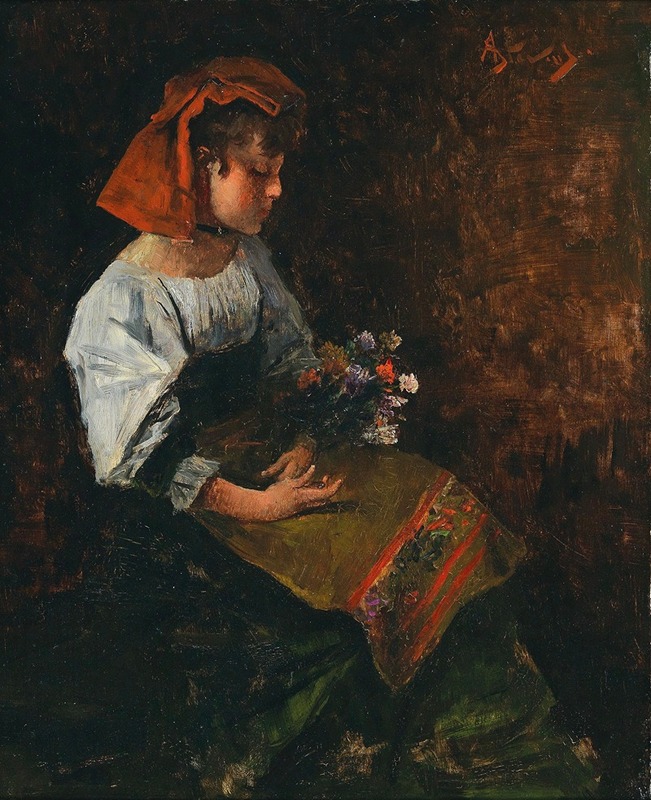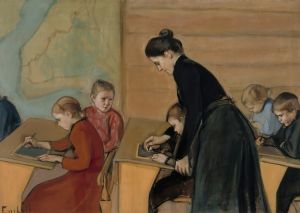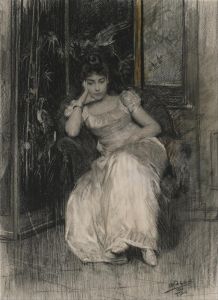
Jeune fille italienne
A hand-painted replica of Alfred Stevens’s masterpiece Jeune fille italienne, meticulously crafted by professional artists to capture the true essence of the original. Each piece is created with museum-quality canvas and rare mineral pigments, carefully painted by experienced artists with delicate brushstrokes and rich, layered colors to perfectly recreate the texture of the original artwork. Unlike machine-printed reproductions, this hand-painted version brings the painting to life, infused with the artist’s emotions and skill in every stroke. Whether for personal collection or home decoration, it instantly elevates the artistic atmosphere of any space.
Alfred Stevens was a Belgian painter known for his exquisite portrayal of women in the 19th century. His work often captured the elegance and grace of his subjects, and he was particularly noted for his ability to render textures and fabrics with remarkable detail. One of his paintings, "Jeune fille italienne" (Italian Young Girl), exemplifies his skill in portraiture and his interest in depicting women with a sense of dignity and poise.
"Jeune fille italienne" is a fine example of Stevens' work during a period when he was deeply influenced by both the Realist and Impressionist movements. Although specific details about the painting's creation, such as the exact year it was painted, are not widely documented, it is consistent with Stevens' style from the mid to late 19th century. The painting features an Italian girl, capturing her in a moment of quiet reflection. Stevens' attention to detail is evident in the way he paints the girl's clothing and the subtle expressions on her face, which convey a sense of introspection and calm.
Stevens was known for his ability to blend elements of realism with a more impressionistic approach, and "Jeune fille italienne" is no exception. The brushwork in the painting is delicate, and the use of light and shadow adds depth to the composition. The background is typically understated, drawing the viewer's attention to the subject herself. This focus on the subject is a hallmark of Stevens' portraits, where the individuality and personality of the sitter are paramount.
The cultural context of the painting is also significant. During the 19th century, there was a fascination with Italian culture and people, often romanticized in art and literature. Stevens' choice to depict an Italian girl may reflect this broader cultural interest. However, unlike some of his contemporaries who might have exoticized their subjects, Stevens' portrayal is respectful and dignified, emphasizing the girl's humanity rather than reducing her to a mere cultural symbol.
Alfred Stevens was a contemporary of other notable artists such as Édouard Manet and James McNeill Whistler, and he was well-regarded in his time. His works were exhibited in prestigious venues, and he received numerous accolades for his contributions to art. "Jeune fille italienne," like many of his paintings, demonstrates his mastery of the portrait genre and his ability to capture the essence of his subjects with sensitivity and precision.
Today, Stevens' works are held in high esteem and can be found in major museums and private collections around the world. "Jeune fille italienne" continues to be appreciated for its artistic merit and the insight it provides into the style and concerns of 19th-century portraiture. Through this painting, viewers can gain an understanding of Stevens' unique approach to capturing the beauty and complexity of his subjects, making it a valuable piece of art history.

















